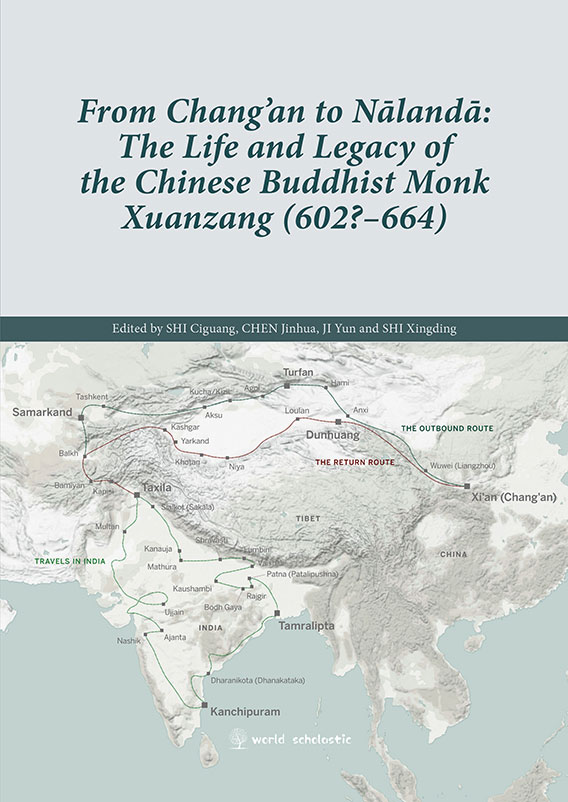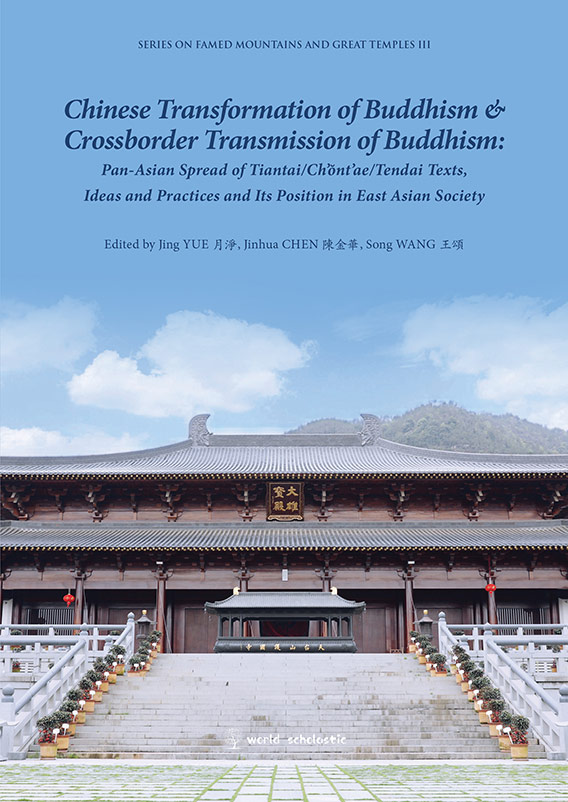Series On “Famed Mountains And Great Monasteries”
Sacred space is an essential component of any religious tradition and especially significant for transcultural religions such as Buddhism. Indeed, it would be hard to exaggerate the importance of holy sites in Buddhist history. While the far-reaching and widespread significance of Buddhist sacred territories has attracted the attention of scholars from various disciplines, there remains much work to be done both on specific locales of practice and interpretative strategies for understanding sacred sites in medieval China generally.
This book series proposes to fill this scholarly gap through the collaborative and in-depth studies of “famed mountains and great temples” (mingshan dasi 名山大寺), territories of exceptional importance in China and, in many cases, throughout the whole of East Asia. Our group focuses efforts on 20-30 mountains celebrated for their significance in the history of Chinese (and usually also East Asian) religions and the temples clustered on their peaks, and 50-60 individual temples of great renown in their own right.
International conferences convened at these sacred sites form a key component of this publication project. In the coming 20-30 years, we plan to hold 4-5 of these conferences annually with funding from the Buddhist communities based at the mountains and temples we are studying. Bringing together experts from around the world to develop their work in situ should facilitate collaboration and further our understanding of these locales of practice. The meeting hosted at Mount Wutai 五臺山, one of the foremost holy places in China, provides a model for this endeavor (http://blogs.ubc.ca/dewei/studies-of-the-wutai-cult-in-multidisciplinary-and-transbordercultural-approaches/).
Excellent papers presented to each conference are collected into two volumes, one in Chinese and the other in English. The senior scholars coordinating our “Famed Mountains and Great Temples” Book Series selected highly capable junior scholars to edit these individual volumes and organize the conferences around which they are built. Papers deemed suitable for publication after undergoing peer-review are then presented for English and Chinese-speaking audiences.
The work included in this series carefully attend to the specific historical and intellectual contexts in which the sites under study were and continue to be constructed as religiously significant. They are oriented around three issues:
- Studies included in our series explore the ways legends and local histories represent the perceived sacrality of the mountains and temples;
- These works consider the roles of relics in fashioning holy territory;
- Finally, they examine the significance of images—including paintings, statues, and maps—to the process of creating, recreating and sustaining Buddhist sacred sites.
The study of Buddhist sacred sites presents fascinating possibilities for integrating scholarly understandings of images, relics and the writing and rewriting of religious legends that are of interest to individuals working in fields such as Art history, Literature, and Religious Studies.
The research presented in the proposed “Famed Mountains and Great Temples” series aims to shed light on the multiple, both religious and non-religious, roles that Buddhist sacred sites played and continue to play in China and throughout the whole of East Asia. Oftentimes understood as boundary markers dividing the secular/mundane world from its sacred/pure counterpart, religious temples and shrines have in many contexts been celebrated as sites free from the polluting influences of everyday life and “arenas for practice” (daochang 道場) within which religious activities could be executed. Yet ample evidence suggests that, despite claims to be other-worldly, places of religious practice in East Asia (and around the world) remain entangled to a greater or lesser extent in the affairs of the ordinary world, facilitating the formation of bonds of all types. This conference aims at addressing the roles temples have played in building social, political, economic-commercial, educational or even diplomatic ties and networks in East Asia. Studies in this series address the significance of Buddhist sacred sites in building social, political, economic-commercial, educational or even diplomatic ties and networks in China:
- Locales in which political power was negotiated and from which religious groups reached out to interact with their patrons;
- Trading centers and places of economic activity;
- Sites of artistic and literary production and performance;
- Libraries and locations where scholarly networks were created and sustained;
- Places for medical treatment and the performance of other activities aimed at promoting human well-beings;
- Arenas for diplomatic networking, particularly via communication between monastic groups from countries and regions across East Asia and around the world;
- Stages for theatre and other types of performance;
- Grounds for fostering martial arts traditions.
Drawing attention to the significance of temples and mountains within and outside of the religious sphere, the collected studies illuminate an important but inadequately studied dimension of East Asia’s present and past.
Alongside the English and Chinese language conference volumes produced out of each international conference, we create documentary films and podcasts about the individual territories. These materials explore the historical importance, as well as present-day significance of these temples and mountains. They incorporate the latest research findings of our team members and, with the help of specialists outside of the academy, gearing towards a non-academic audience including policy-makers, local communities (especially East Asian religious groups), undergraduate students, and school groups. Bilingual subtitles in the documentaries allow us to reach an international community of individuals interested in Chinese Buddhism in particular and East Asian cultures generally.
The “Famed Mountains and Great Temples” book series is truly interdisciplinary. Our contributors employ methodologies associated with religious studies, political history, art history, history of economies and international commerce and should, in this way, stimulate new research in East Asian Buddhism. In addition to Sinologists and Buddhologists, the publications presented in this book series may be of interest to experts in political science, comparative religion, art and architecture, Chinese economic history and international trade, trans-border cultural transmissions, and also those working in the fields of conflict resolution and international relations.










